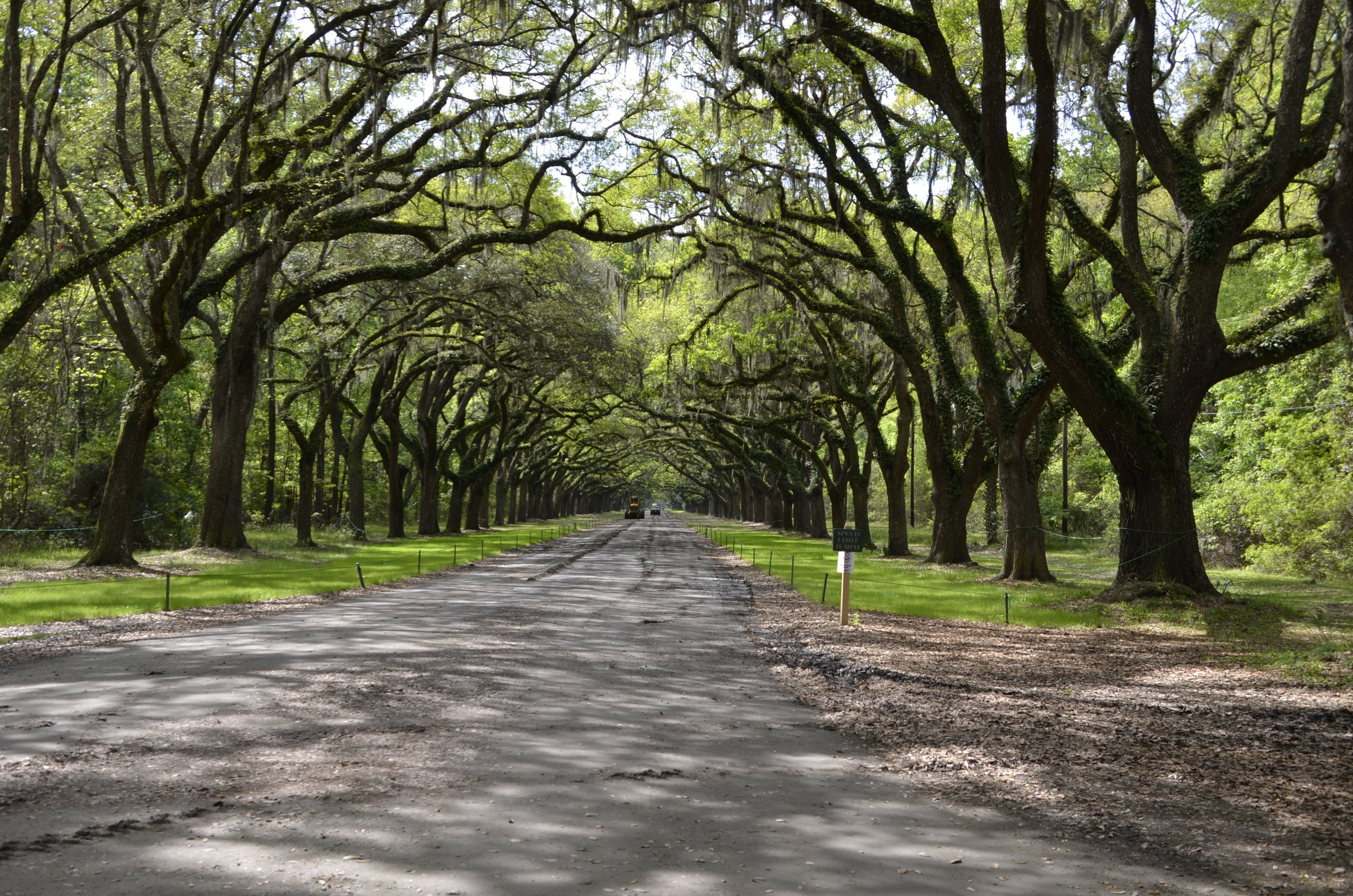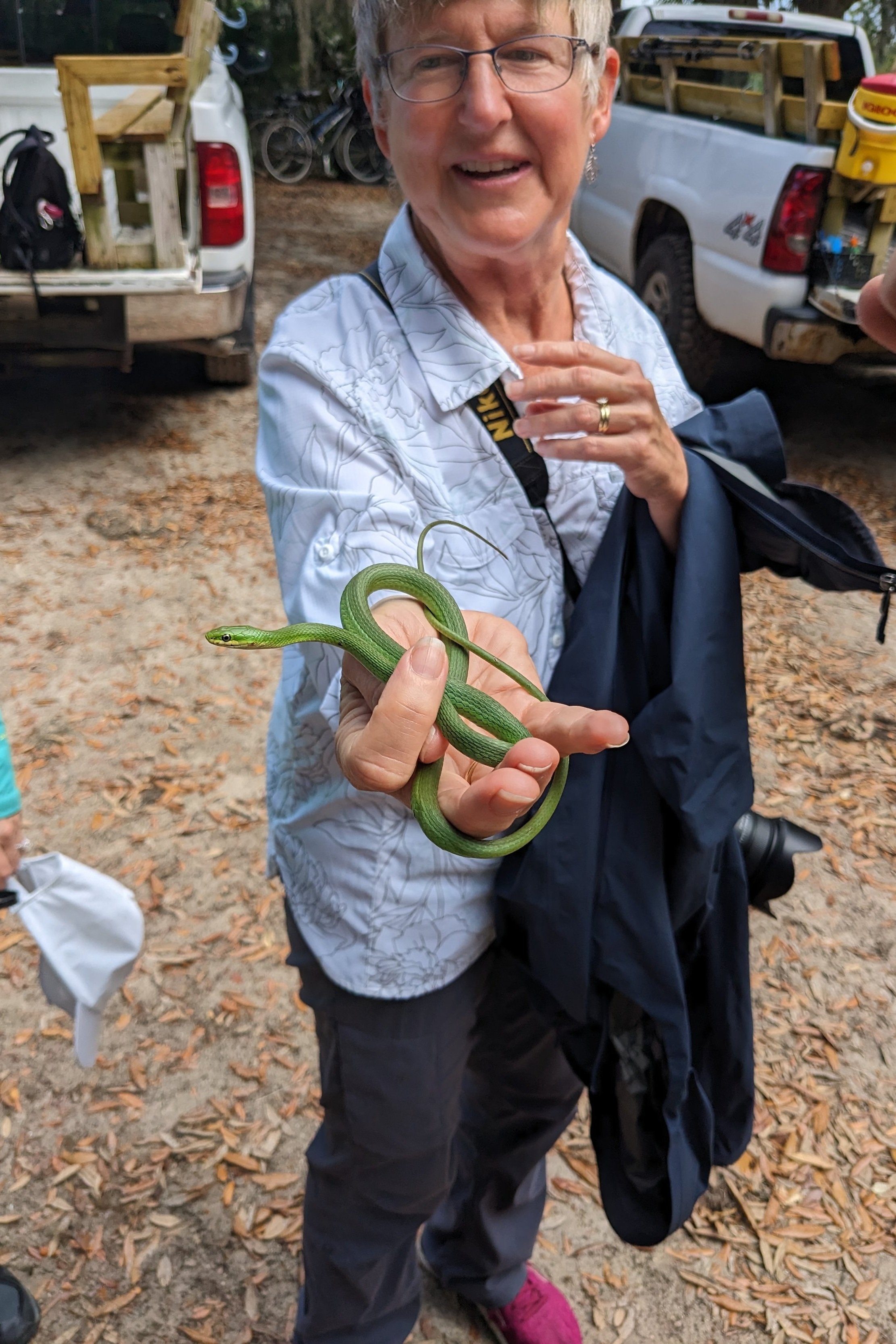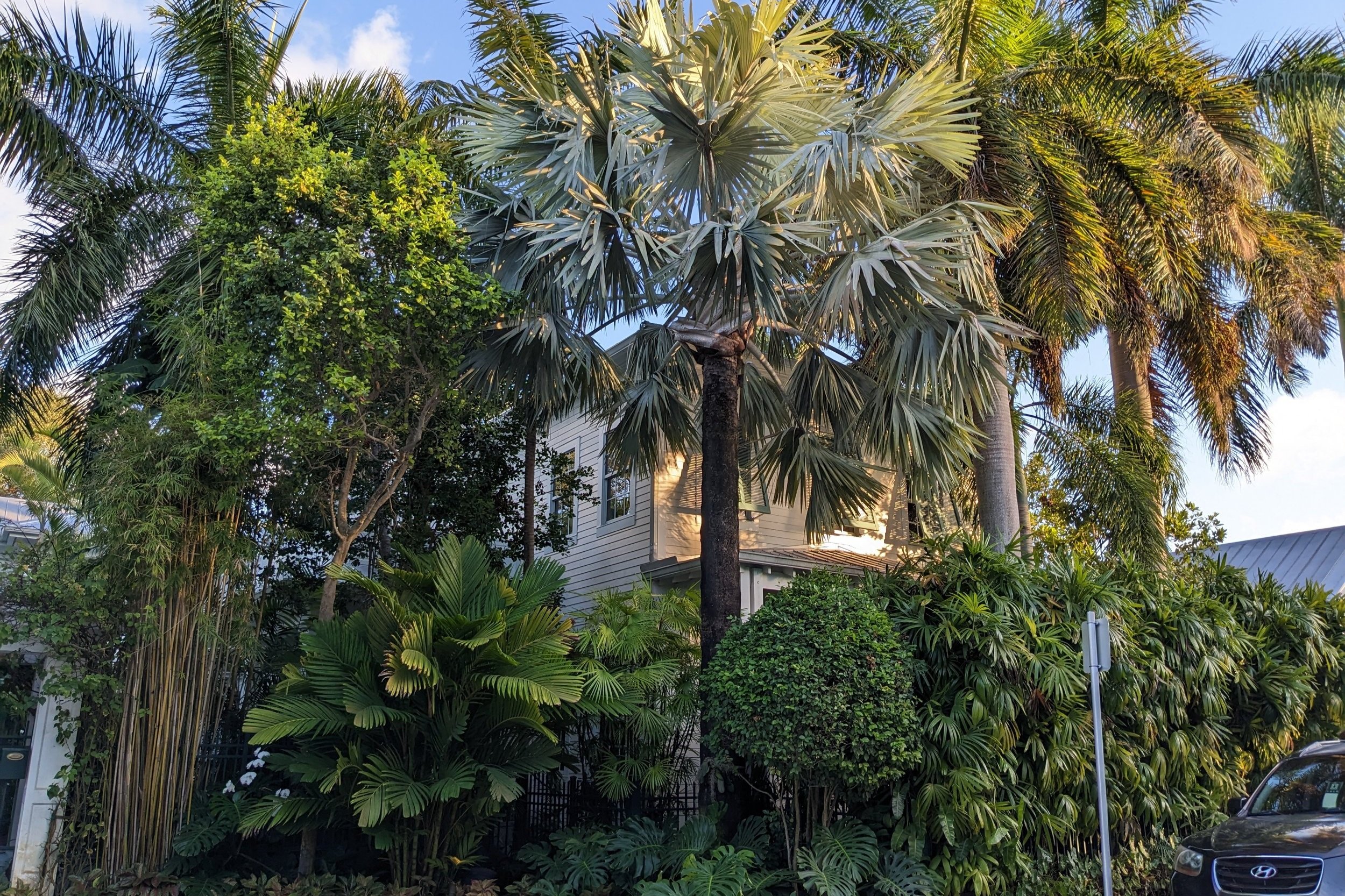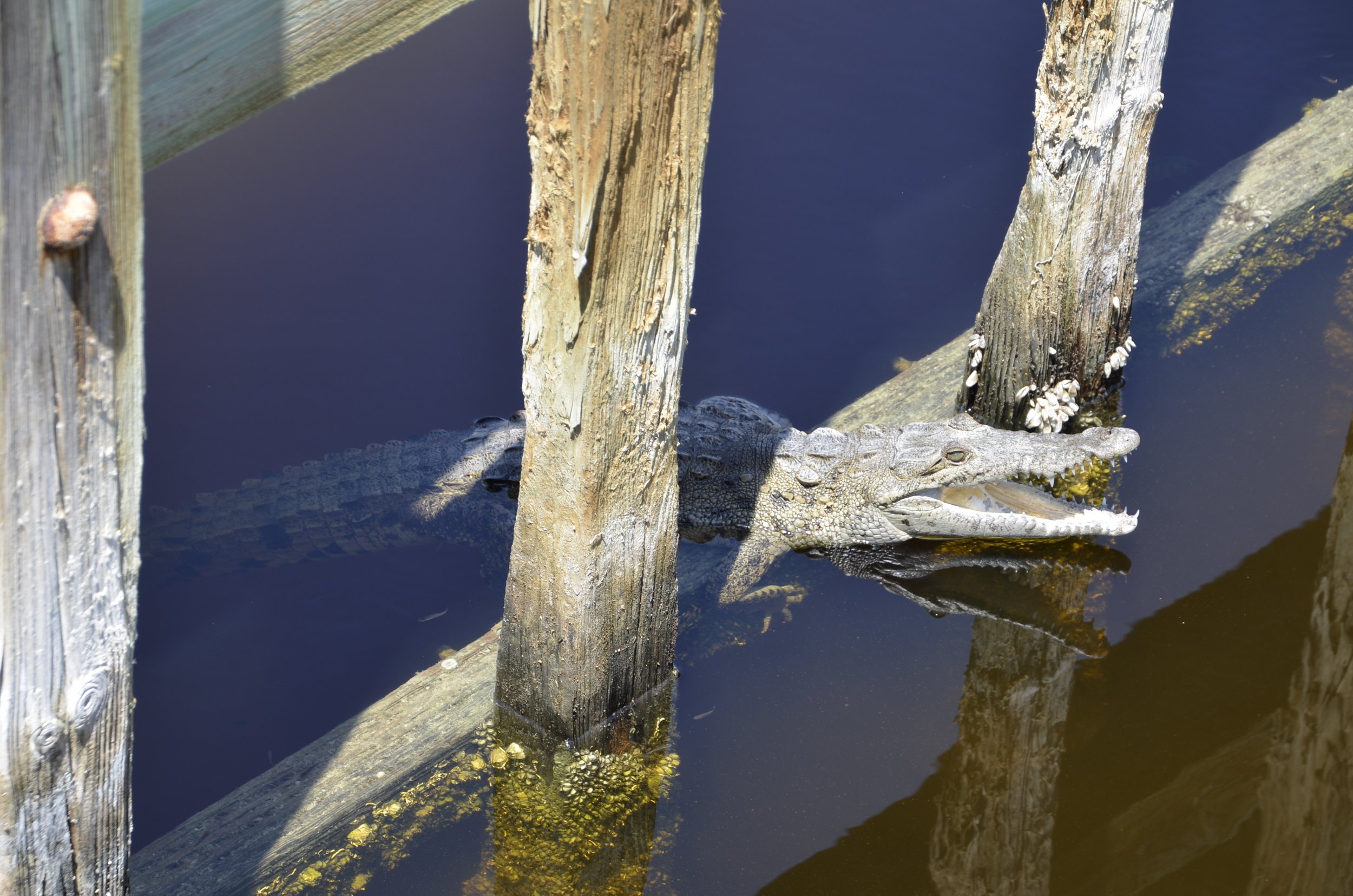Georgia
As I said previously, before we explored Florida, we spent a couple of days (unfortunately pretty rainy) in Savannah. The live oaks dripping with Spanish moss kept grabbing my attention…
… as did the beautiful squares…
… and streets lined with stately homes.
I was dismayed to find that we arrived after azalea season (in late March), but I did find one bush still blooming!
Down at the Savannah River, I loved this juxtaposition -
The sun came out the morning we left (of course!), so we made a quick detour back through Forsyth Park…
… which is Savannah’s version of Central Park. The fountain in the center is understandably the most photographed fountain in the city…
… and serves as the background to many an engagement or wedding photo.
On our way out of town, we headed to the Bonaventure Cemetery.
I wasn’t interested in any of the “famous” people resting there - I just wanted to stroll along the lanes, and take in the peaceful ambiance.
The family plots were interesting, with their raised concrete borders…
… and labelled entryways -
Some interesting statuary -
They sure can set a mood -
We did a quick drive-by of the entrance to Wormsloe Historic site…
… and I found out later that there are over 400 live oaks lining the 1.5 mile entrance drive.
Now, jumping forward in time, to the end of our road trip, we came back into GA to visit Okefenokee Swamp. Longleaf pines and saw palmetto were the predominant plants we saw…
… but there were also what I consider the eponymous watery areas of a swamp -
As I was taking that picture above, Steve said, “oh yeah, nice ‘gator”…
… and I almost literally jumped back from the edge of the water, because I hadn’t even seen it, as I was focusing on the waterway!
From this tower…
… we had a bird’s eye view of the swamp…
… and got a neat angle looking down on cypress and some water below -
As we were driving out, there was a snake in the road…
… and I found out by research later, that it was a Pygmy Rattlesnake! I loved the red highlights along its back.
We then visited some of the barrier islands along the south GA coast, and it was on Jekyll Island that we found Driftwood Beach -
What was once a maritime forest is now haunted by skeletons (some purported to be 500 years old) -
It was really windy when we were there - (open this email in your browser by clicking the link at the bottom of the post to see and hear the video) -
I’ve never seen sea foam bounce and fly like that!
I captured this pair right across the road from the beach -
Tri-colored Heron and Snowy Egret
Besides the Spanish moss, check out all the greenery growing on the branches -
Our last stop on this road trip was spending a few days with friends on Little St. Simon’s Island. Overall, it was like “summer camp for adults”. We definitely didn’t have to sleep in tents or on bunk beds, but we did get to go on lots of guided excursions, and even bike rides on our own. My first big surprise was seeing this fella as we neared the beach -
I had never gotten to see a wild armadillo before, and certainly didn’t expect it on a lush island in south GA! The beach was huge and deserted…
… other than for the multiple dozens of Terns and other shore birds -
I loved their swept-back hairdos. :)
Royal Terns, and one Forster’s Tern in the foreground
I know y’all aren’t crazy birders like me, but I just have to share some gorgeous species with you. We visited a pond, where quite a few were nesting.
This is a Great Egret posturing for a mate…
… while I bet you can see where the Roseate Spoonbill gets its name.
I loved the show this Snowy Egret put on -
I can tell your eyes are getting glassy from too many birds, so I’ll switch to snakes!
Grass snake
I’ll close with this shot of sand on the beach, made intricate by the wind -
Even as this blog is posted, we’re on our way to our next adventure… far, far away! ;)



















































































